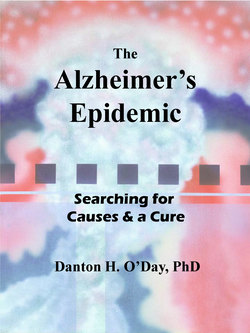Читать книгу The Alzheimer's Epidemic - Danton O'Day - Страница 12
На сайте Литреса книга снята с продажи.
Cells of the Alzheimer’s Brain
ОглавлениеAs we will see in Chapter 5, the brain is actually made up of many types of cells but it is the neurons that are of primary interest in Alzheimer’s disease because it is these cells that show the first clear evidence of the disease. The brain neurons are the central place where the changes of the Alzheimer’s brain begin and end. As a result, they are the site where scientists hope to find the cure for Alzheimer’s disease. Searching the brain for the cause of Alzheimer’s is much like an episode of the television show CSI; it is a true Crime Scene Investigation. Rather than investigating a dying person, we are essentially looking at the slow death of the brain—the site of all reason, learning and memory. So, like a crime scene, we want to see what is different from the normal brain as compared to the Alzheimer’s brain. Then we want to understand how those differences arose: what caused a good brain to go bad. Finally, when we understand what caused the disease, we want to learn how to prevent it. But science and crime scene investigation are like life: sometimes the culprit is elusive and evades detection or capture. In that case, we have to compromise. Since we can’t prevent the death of the brain, we want to at least be able to slow its degeneration or, even better, stop it in its tracks. This approach will have to do until the cause or biochemical culprits responsible for Alzheimer’s disease are finally found and scientists can begin to prevent the disease, slow it or, hopefully, develop a cure.
So that’s what we’re going to do in the book. We’re going to see what we know about the underlying events of Alzheimer’s disease as it relates to brain cells. What causes these brain cells to lose their ability to function properly? What causes them to die? How can we slow this sequence of events? And, ultimately, how can we determine how the disease starts? Before we get out our microscopes and our biochemical tools to understand these changes, let’s look at a short history of Alzheimer’s disease to understand how this disease was first identified and how that discovery set the stage for how things sit today.
